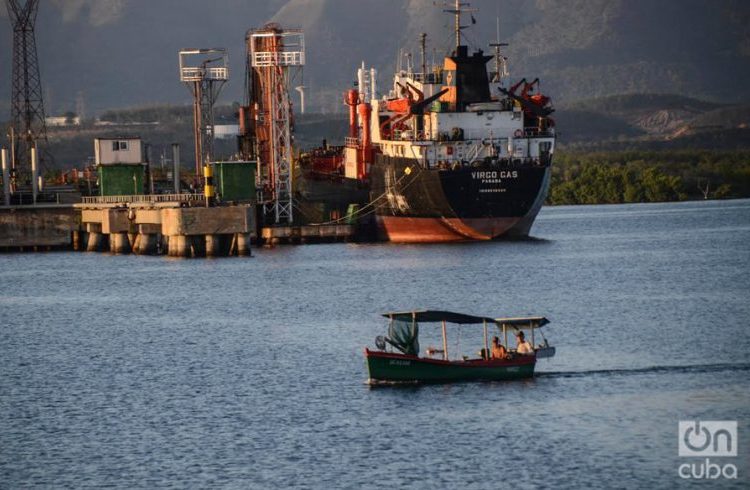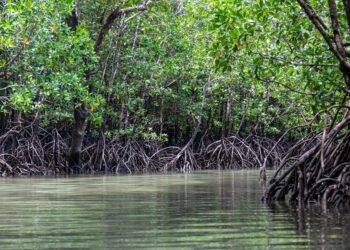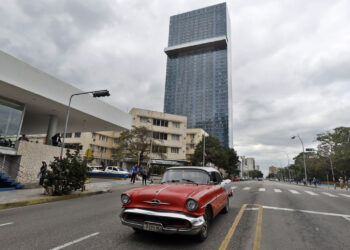It was Goyo who called my attention about a very interesting daily event when he said to me: “Have you noticed that the P route buses have a front door that has two leafs and the drivers almost always keep one of them closed or have it closed down?” Then the real question came: “And how is it possible if what’s convenient for them is that the people get on? How contradictory, brother, to make those who help them carry out their purpose go through so much trouble!”
The same occurs with investment. In 2016 the planned growth for investment (13 percent) was lower than that for 2015, when it grew 24 percent. We had a hard time materializing our investment plans. Foreign Direct Investment (FDI) as well as national investment. It has to do with many things, from the still not overcome structural deformations to a culture and regulations that frequently do not adequately accompany the purpose and limit completing the investment process or hinder and delay it too much. At times a project of dozens of millions stops because of a product or an equipment that barely costs a twentieth of the amount the process is worth, and our enterprises cannot overcome the paperwork to resolve that situation in a suitable period of time.
What was recently published in Cubadebate about our Special Development Zone was what brought to my mind the conversation. I believe such detailed information had never before been published about the investment project for the most important development the country has undertaken in the last five years. The owners of that project – the entire Cuban people – needed that information.
Almost a billion pesos invested in a small territory that will make it possible to incorporate ourselves into one of the most dynamic sectors of the economy of services: that of the freight transportation logistics; at a time in which that business is experiencing decisive changes in the face of the multiplication of transportation capacity due to the new locks of the Panama Canal. That “wing” of that major project is already finished in its first phase. It’s a new advantage we have and that if well exploited should help our development.
The other “wing” is that of the Special Zone. That one should allow us to take a technological leap, favor exports, generate linkages toward the domestic productive sector and generate more “adequate employment” for our population, based on investments with foreign capital.
However, from my viewpoint, what our president said last December 27, which he has incessantly repeated in almost all his speeches about the need to act more dynamically with respect to foreign investment, suits our Special Zone very well. Here is where the “gate syndrome,” the one that fuels the closed leaf of the door of the P buses, becomes evident.
Some time ago our press had already published that hundreds of companies had shown interest in the zone. Today we know that out of all of them, 23 counting the last one, which is news, between AT Comercial and Iberostar to supply products for tourism, have barely been approved. By the way, let’s hope that three or four more are approved, at least one between ITH and a renowned logistics company and another between some other Cuban organization and another foreign company and one between a cooperative and a national enterprise and that all of them compete for the world’s most dynamic tourist market in 2016.
Recognizing all the effort carried out, the time it has taken to create the necessary infrastructure facilities that allow for the investors’ establishment called my attention.
“One of the greatest incentives to attract foreign investment is that there be an infrastructure in the Zone with all the necessary conditions to achieve the synergy between the different investments and the productive links. Let’s recall that the cash and fiscal incentives are as important as the technical requirements of the infrastructure works; on that we have been focusing during this time,” affirmed one of the executives of the Mariel Special Development Zone (ZEDM).
If the absence of infrastructures is a constraint, then why don’t we have two concessionaries instead of one? Or perhaps three? That way they can compete among themselves. That’s how they have to demonstrate they are really good at building infrastructures and promoting the zone. Should we wait another three years to complete the necessary infrastructures? How much do the lost opportunities cost? Should we or shouldn’t we change the concept and the focus?
Let’s think that one of the growth sources for 2017 and all the following years is investment, national and FDI.
We can make a small verification. In the Investment Opportunities portfolio published in November 2016 we can find the FDI projects by sectors.
FDI businesses
Although it doesn’t have to be conclusive or that there be a direct relationship between one thing and the other, the truth of the matter is that those sectors that have been more proactive toward FDI are showing some much better results than others that have been reluctant to that policy.
Let’s compare, for example, Tourism and Sugar, or Mining and Agriculture or any other sector we decide on. The agricultural sector, construction, the production of food products, telecommunications are at this moment in time bottlenecks for our future development. The “penetration” of FDI is much lower in them than in Tourism, Mining, etc.
Can’t we learn from evidence? What more must be demonstrated? How many courses must be taken to become aware of something so on edge? And I can tell you: the Cuban tourism sector has had to compete, at a disadvantage, due to the U.S. blockade and to our own limitations, with very favored countries and that had many years of advantage compared to Cuba.
For 2017 investment will again increase with respect to the previous year, with an increase of 49 percent of the State funds to support it. Up to now, the published information does not tell us how much of this will be national investment and how much foreign investment.
Up to now neither can we know how much of that investment will be state investment and how much will be non-state investment. It would be useful to know this. Nevertheless, using the figures for 2015 we could say that the amount of cash investments in 2016 (if the planned growth, 13.5 percent, was effective) must have reached 6.703 billion pesos, very far from the amount we really need, which stands at around 14 billion a year, that is, a proportion of between 20 percent and 25 percent of the GDP.
It is also true that today we don’t know how much private investment amounts to in the country, but it is very evident that that investment has become an important factor that boosts the demand for cash. Just in the case of the hotel and catering business, restaurants and private rooms for rent, that investment, without being decisive or much less, moves a considerable amount of resources. Some agencies estimate today that Cuba receives between 2.5 and 3.7 billion dollars in remittances.
Some Cuban economists today estimate that between 30 and 40 percent of those remittances are for private investment, let’s say that it’s 3 billion in remittances and that 30 percent is for investment, that means that around 900 million dollars are invested by the private sector in creating new capacities and jobs.
How much money do Cuban banks have in savings accounts today? Well, according to the 2015 Statistical Yearbook of Cuba that figure amounts to 23. billion Cuban pesos. If we multiply those 900 million dollars by 25, then we will have some 22.5 billion Cuban pesos, almost the same amount as in the savings accounts. It is definitively not a small amount of money.
If we compare those 900 million dollars to the amount of executed FDI, around 400 million, then neither does the amount of money seem little. But even if we reduce to half that original figure of 900 million, then they would be 450 million dollars, very much like the FDI of 2016.
Undoubtedly, the exercise done above is absolutely not rigorous, but I just wanted to call attention to the fact that today, when we speak of investment, we must consider all these modalities, where national private investment has also started to play a certain revitalizing role as part of the national demand in cash and as an encouraging factor for productive chains that unfortunately still remain, partly or as a whole, in isolated circuits of the general dynamics of our economy.
So let’s think of investment, but in all of it, in the State National Investment, in the Non-State National Investment and in Foreign Direct Investment and let’s think that we must try to organize our country and create the necessary regulations to facilitate it. We must be able to open that other leaf of the front door of the P buses.
I’m still convinced that we can grow 2 percent or perhaps 1.5 percent or perhaps 3 percent, because a part of what we need does not involve resources, but rather new rules of the game (institutions), incentives that reward the results.










